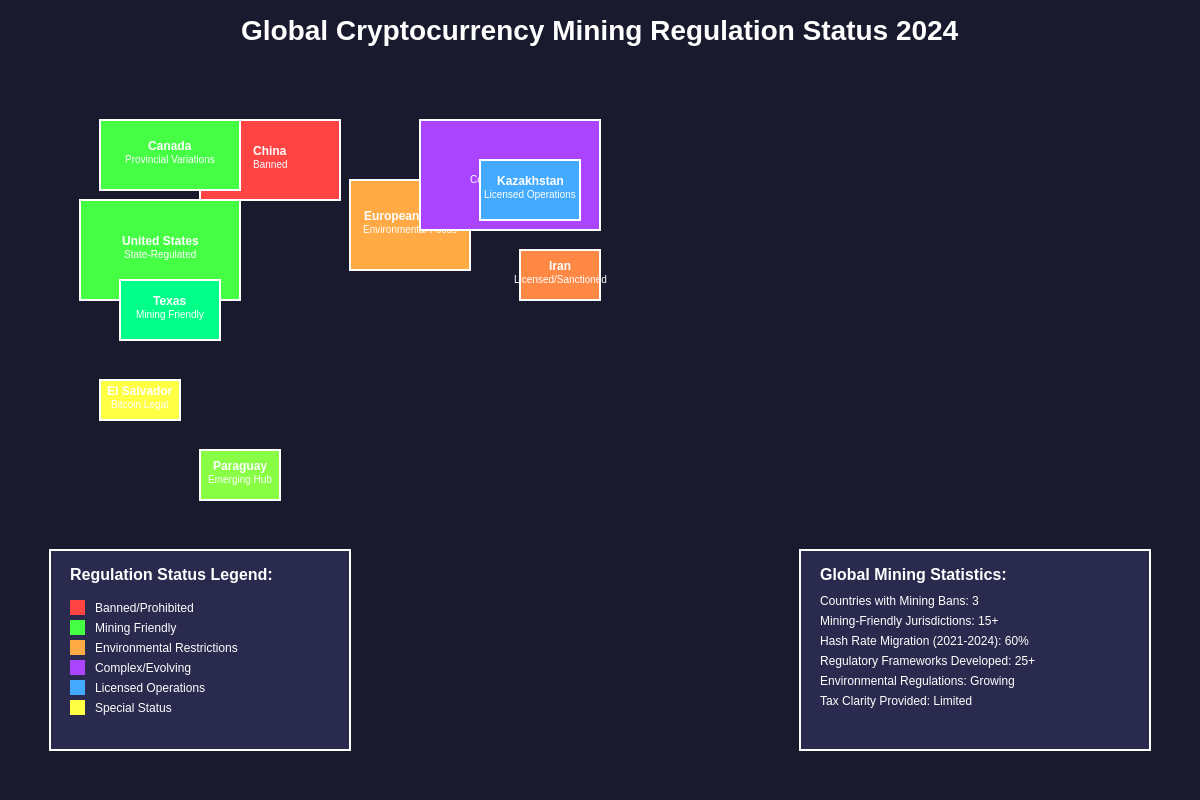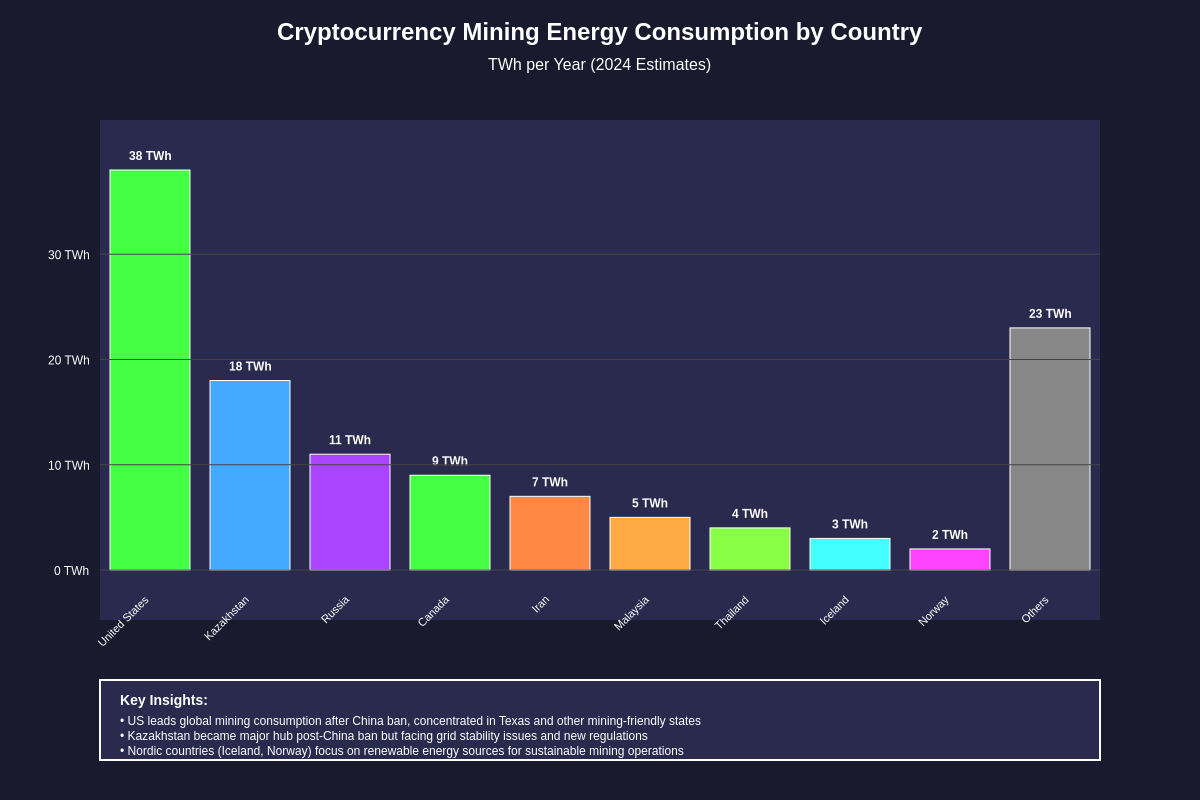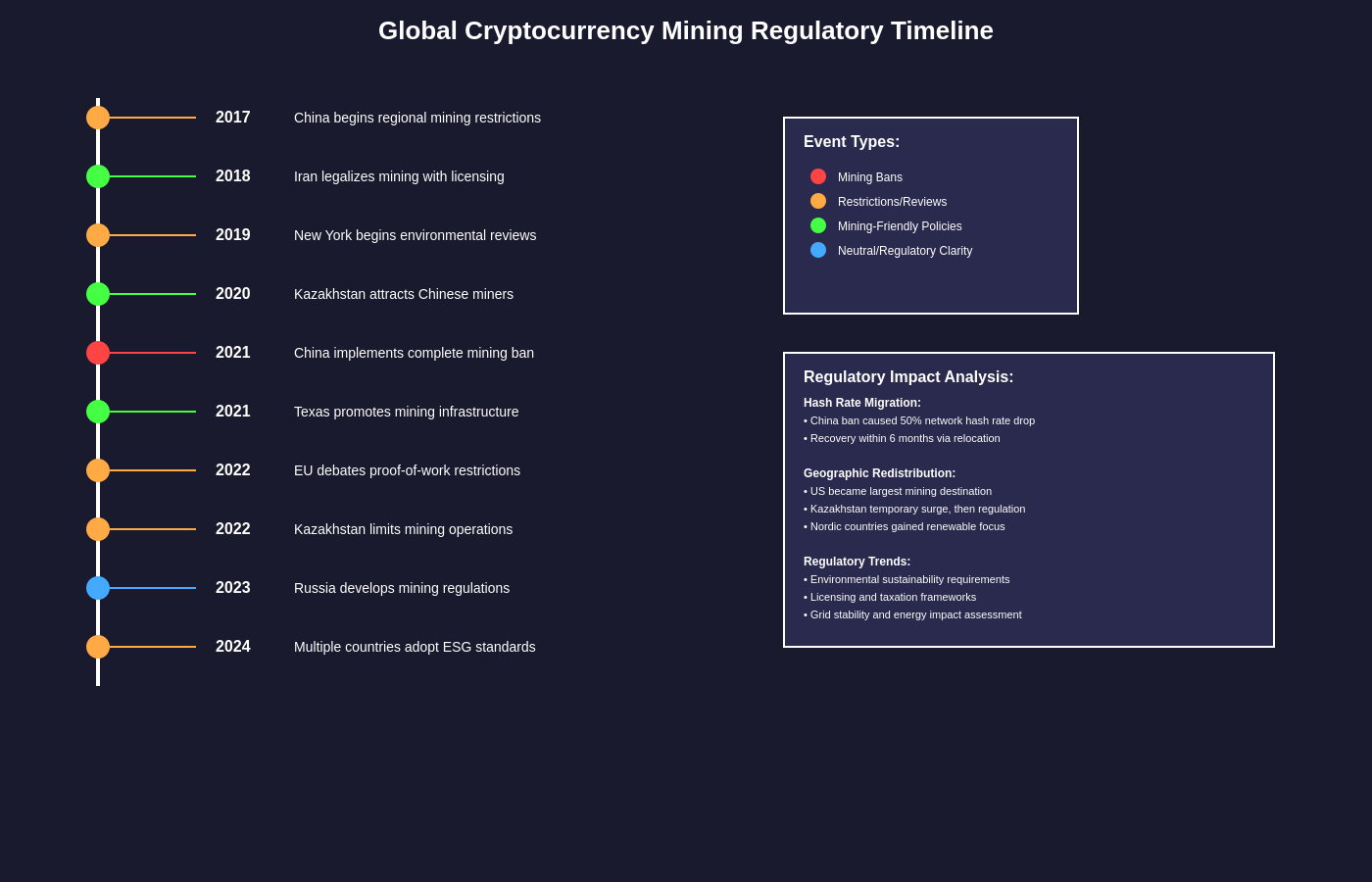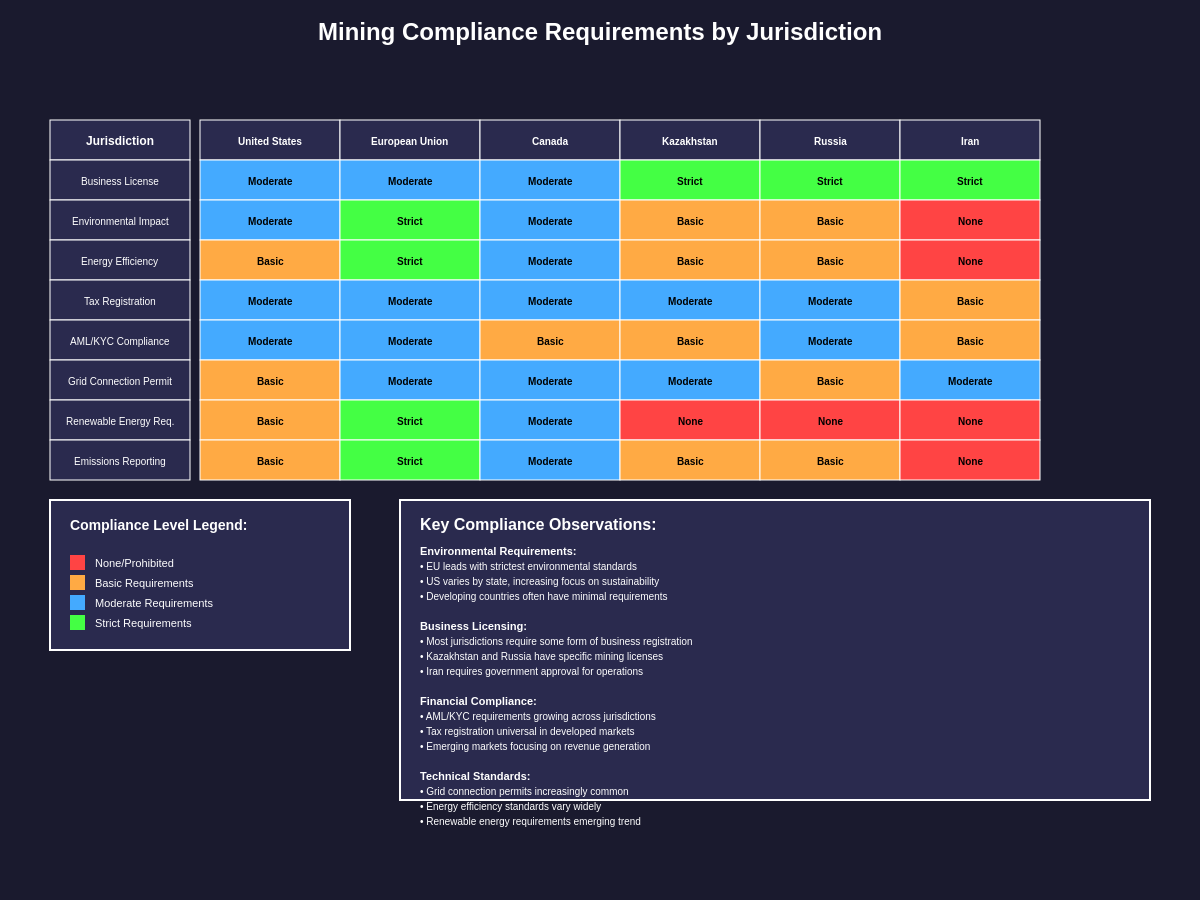The Global Regulatory Landscape for Cryptocurrency Mining
The regulatory approach to cryptocurrency mining varies dramatically across different jurisdictions, reflecting diverse perspectives on environmental impact, energy consumption, economic benefits, and financial stability concerns. As cryptocurrency market analysis continues to evolve, governments worldwide are grappling with how to balance the innovative potential of blockchain technology against concerns about energy usage, illegal activities, and market stability. The regulatory frameworks emerging from this global debate will fundamentally shape the future distribution of mining operations and the overall security of cryptocurrency networks.

The complexity of mining regulation stems from its intersection with multiple policy areas including environmental protection, energy policy, financial regulation, taxation, and technology governance. Countries are taking vastly different approaches based on their energy resources, environmental commitments, economic priorities, and technological capabilities, creating a patchwork of regulations that mining operators must navigate when deciding where to establish operations.
China’s Complete Mining Ban and Its Global Impact
China’s decision to implement a comprehensive ban on cryptocurrency mining in 2021 represents one of the most significant regulatory interventions in the industry’s history, fundamentally reshaping the global distribution of mining operations and demonstrating the profound impact that government policy can have on decentralized networks. The ban, which was initially announced through various provincial directives before being formalized at the national level, cited concerns about energy consumption, financial risks, and carbon neutrality goals as primary motivations.
The implementation of China’s mining ban was swift and comprehensive, with major mining provinces including Inner Mongolia, Xinjiang, Sichuan, and Yunnan shutting down operations within months of the initial announcements. This regulatory action resulted in an immediate and dramatic reduction in Bitcoin’s global hash rate, with network difficulty adjusting downward to accommodate the sudden loss of computational power from Chinese mining operations.
The economic impact of China’s mining ban extended beyond immediate operational disruptions to include significant equipment displacement, as mining hardware manufacturers and operators scrambled to relocate operations to jurisdictions with more favorable regulatory environments. This migration created opportunities for other countries to attract mining investment while also highlighting the mobile nature of mining operations and their sensitivity to regulatory changes.
The environmental arguments underlying China’s mining ban centered on the country’s commitment to achieving carbon neutrality by 2060 and concerns about the energy intensity of proof-of-work mining operations. Chinese authorities argued that cryptocurrency mining was incompatible with national climate goals, particularly given the prevalence of coal-powered electricity in many mining regions.
United States: State-by-State Regulatory Approaches
The United States has adopted a federalist approach to cryptocurrency mining regulation, with individual states developing their own frameworks while federal agencies provide overarching guidance on specific aspects such as securities regulation, anti-money laundering compliance, and environmental protection. This decentralized regulatory structure has created significant variation in mining-friendly policies across different states, leading to competition among jurisdictions to attract mining investment.
Texas has emerged as one of the most mining-friendly states in the US, actively courting cryptocurrency mining operations through favorable electricity markets, regulatory clarity, and infrastructure development initiatives. The state’s deregulated electricity market allows miners to participate directly in energy markets, potentially providing grid services while benefiting from low electricity costs during periods of excess renewable energy generation. Texas officials have embraced mining as an economic development opportunity while highlighting its potential to support renewable energy development through demand response capabilities.
New York has taken a more restrictive approach, particularly regarding proof-of-work mining operations, with the state legislature passing measures to impose moratoriums on certain types of mining facilities and requiring environmental impact assessments for new operations. The New York State Department of Environmental Conservation has focused particularly on the environmental impacts of mining operations, requiring detailed analysis of energy usage and carbon emissions for permit applications.
Wyoming has positioned itself as a blockchain-friendly jurisdiction through comprehensive legislation designed to attract cryptocurrency businesses, including mining operations. The state has passed numerous bills clarifying the legal status of digital assets, providing regulatory sandboxes for blockchain innovation, and establishing favorable banking relationships for cryptocurrency businesses.
Montana, North Dakota, and other states with abundant energy resources have also developed mining-friendly policies, recognizing the economic opportunities presented by large-scale mining operations while addressing local concerns about energy usage and environmental impact. These states often benefit from stranded energy resources that can be effectively utilized by mining operations, creating economic value from otherwise underutilized energy infrastructure.
Federal oversight of cryptocurrency mining in the United States occurs through various agencies including the Securities and Exchange Commission, the Commodity Futures Trading Commission, the Financial Crimes Enforcement Network, and the Environmental Protection Agency, each focusing on different aspects of mining operations and their broader economic and environmental impacts.
European Union’s Environmental Focus and Energy Regulations
The European Union has approached cryptocurrency mining regulation primarily through the lens of environmental protection and energy efficiency, reflecting the bloc’s commitment to achieving carbon neutrality and reducing greenhouse gas emissions. The EU’s regulatory framework for mining is still evolving, but early indications suggest a focus on environmental impact assessment, energy efficiency requirements, and alignment with broader climate policy objectives.
The European Parliament has debated various measures related to cryptocurrency mining, including proposals that would have effectively banned proof-of-work mining operations within EU member states. While these extreme measures were ultimately rejected, the debates highlighted significant concerns about the environmental impact of mining and the potential conflict between cryptocurrency networks and EU climate commitments.
Individual EU member states have developed their own approaches to mining regulation within the broader European framework, with some countries embracing mining operations while others have imposed restrictions or bans. Germany has generally maintained a technology-neutral approach while requiring compliance with existing energy and environmental regulations, allowing mining operations to proceed provided they meet standard regulatory requirements.
France has expressed concerns about the environmental impact of cryptocurrency mining while stopping short of implementing comprehensive bans, instead focusing on ensuring that mining operations comply with existing environmental and energy regulations. French authorities have emphasized the importance of using renewable energy sources for mining operations and have encouraged the development of more energy-efficient consensus mechanisms.
Nordic countries including Sweden, Norway, and Finland have attracted significant mining investment due to their abundant renewable energy resources, cold climates that reduce cooling costs, and generally stable regulatory environments. However, some Nordic jurisdictions have begun implementing measures to limit mining operations due to concerns about energy usage and environmental impact, particularly during periods of high electricity demand.
The EU’s approach to mining regulation continues to evolve as policymakers balance environmental concerns against economic opportunities and technological innovation. The implementation of the Markets in Crypto-Assets (MiCA) regulation will likely provide additional clarity regarding the regulatory treatment of mining operations within the European Union.
Russia’s Complex Relationship with Cryptocurrency Mining
Russia’s approach to cryptocurrency mining regulation has been characterized by significant policy reversals and conflicting signals from different government agencies, reflecting internal debates about the economic opportunities and risks associated with the industry. The country’s vast energy resources and cold climate make it naturally attractive for mining operations, but concerns about financial stability, sanctions evasion, and monetary sovereignty have led to a complex and sometimes contradictory regulatory framework.
Initially, Russian authorities took a generally hostile approach to cryptocurrency mining, with various officials calling for comprehensive bans and criminal penalties for mining activities. However, as the scale of the industry became apparent and other countries began capitalizing on mining opportunities, Russian policy began to shift toward a more nuanced approach that would allow regulated mining while maintaining control over the sector.
The Russian government has recognized the potential economic benefits of cryptocurrency mining, particularly given the country’s abundant energy resources and the opportunity to monetize stranded energy assets in remote regions. Mining operations can provide economic development opportunities in areas with limited industrial activity while utilizing energy resources that might otherwise go unused.
However, Russian authorities have also expressed concerns about the use of cryptocurrencies for sanctions evasion, money laundering, and other illicit activities, leading to calls for comprehensive regulation and oversight of the mining industry. The intersection of mining regulation with broader sanctions and financial restrictions has created additional complexity in the Russian regulatory environment.
Current Russian mining regulations require registration of mining operations above certain thresholds, compliance with energy efficiency standards, and adherence to anti-money laundering requirements. The regulatory framework continues to evolve as authorities balance economic opportunities against security and stability concerns.
Middle Eastern and Central Asian Mining Hubs
Several countries in the Middle East and Central Asia have emerged as significant cryptocurrency mining destinations, leveraging abundant energy resources, favorable climates, and supportive regulatory frameworks to attract mining investment. These regions have benefited from the migration of mining operations following China’s mining ban, positioning themselves as alternative hubs for cryptocurrency mining activities.

Kazakhstan became one of the world’s largest mining destinations following the exodus of Chinese miners, with the country’s abundant coal and natural gas resources providing relatively inexpensive electricity for mining operations. However, Kazakhstan has subsequently implemented regulations aimed at managing the rapid growth of the mining sector, including licensing requirements, taxation frameworks, and energy usage limits designed to prevent strain on the national electricity grid.
The rapid expansion of mining operations in Kazakhstan led to power grid instability and electricity shortages, prompting government intervention to limit mining activities during peak demand periods. These challenges highlighted the importance of managing mining growth to prevent negative impacts on domestic energy consumers and critical infrastructure.
Iran has also attracted significant mining investment despite international sanctions, with the government implementing a licensing system for mining operations while requiring the use of domestically produced electricity. Iranian authorities have used mining regulation as a tool for managing energy consumption and generating government revenue through licensing fees and taxation.
The United Arab Emirates has positioned itself as a regional hub for cryptocurrency activities, including mining operations, through the development of comprehensive regulatory frameworks and the establishment of cryptocurrency-friendly free trade zones. Dubai and Abu Dhabi have competed to attract blockchain businesses, including mining operations, as part of broader economic diversification strategies.
Other countries in the region, including Iraq, Uzbekistan, and Georgia, have also implemented various measures to attract mining investment while managing the associated risks and challenges. These countries often benefit from abundant energy resources and relatively low electricity costs, making them attractive destinations for energy-intensive mining operations.
Canada’s Provincial Variations and Environmental Considerations
Canada has emerged as a major destination for cryptocurrency mining operations, with different provinces adopting varying approaches to regulation and promotion of the industry. The country’s abundant renewable energy resources, cold climate, and stable regulatory environment have made it attractive to mining operators seeking alternatives to more restrictive jurisdictions.
Quebec initially embraced cryptocurrency mining enthusiastically, with Hydro-Quebec actively marketing cheap renewable electricity to mining operations and the provincial government expressing support for the industry as an economic development opportunity. However, concerns about electricity demand and grid capacity led to the implementation of a moratorium on new mining operations and the development of a more structured approach to managing mining electricity consumption.
British Columbia has taken a more cautious approach to mining regulation, focusing on environmental impact assessment and energy efficiency requirements while allowing mining operations to proceed under existing regulatory frameworks. The province’s abundant hydroelectric resources make it attractive for environmentally conscious mining operations, though regulatory requirements can be more stringent than in some other jurisdictions.
Alberta has actively promoted cryptocurrency mining as part of its economic diversification strategy, leveraging the province’s energy resources and business-friendly regulatory environment to attract mining investment. The province has particularly focused on promoting mining operations that utilize renewable energy sources or provide grid services to support electricity system stability.
Ontario and Manitoba have also attracted mining investment, though with varying degrees of government support and regulatory clarity. Federal oversight of mining operations in Canada occurs through various agencies responsible for financial regulation, environmental protection, and energy policy, creating a multi-layered regulatory framework that mining operators must navigate.
Emerging Markets and Developing Countries’ Opportunities
Many developing countries and emerging markets have recognized cryptocurrency mining as an economic development opportunity, particularly those with abundant energy resources or favorable climatic conditions for mining operations. These countries often view mining as a way to monetize stranded energy assets, attract foreign investment, and participate in the global digital economy.
Paraguay has emerged as an attractive destination for mining operations due to its abundant hydroelectric power and relatively low electricity costs, with the government expressing general support for the industry while developing appropriate regulatory frameworks. The country’s surplus renewable energy capacity makes it particularly attractive for environmentally conscious mining operations.
El Salvador’s adoption of Bitcoin as legal tender has been accompanied by ambitious plans to develop Bitcoin mining infrastructure powered by geothermal energy from the country’s volcanic resources. The government has positioned mining as part of a broader strategy to modernize the economy and attract international investment, though implementation has faced various practical challenges.
Various African countries including Nigeria, Kenya, and South Africa have shown interest in developing regulatory frameworks to support cryptocurrency mining, recognizing the potential for economic development while addressing concerns about energy usage and financial stability. These countries often face unique challenges related to electricity infrastructure and regulatory capacity.
Argentina has attracted mining investment due to relatively low energy costs and government support for technology innovation, though regulatory uncertainty and economic instability have created challenges for long-term planning. The country’s abundant renewable energy resources and favorable climate conditions make it naturally attractive for mining operations.
Taxation and Economic Policy Considerations
The taxation of cryptocurrency mining operations varies significantly across jurisdictions, reflecting different approaches to digital asset taxation and the integration of mining activities into existing tax frameworks. These tax policies significantly influence the economic viability of mining operations and affect decisions about where to locate mining facilities.
Some countries treat mining rewards as taxable income at the time of receipt, requiring miners to pay taxes based on the fair market value of mined cryptocurrencies when they are received. This approach can create significant compliance burdens and tax liabilities for mining operations, particularly during periods of high cryptocurrency prices when crypto market movements result in substantial taxable events.
Other jurisdictions have adopted more mining-friendly tax policies, treating mining operations as businesses subject to standard corporate tax rates while allowing deductions for equipment, electricity, and other operational expenses. These approaches can significantly improve the economics of mining operations while providing clearer guidance for tax compliance.
The classification of mining equipment for depreciation purposes also varies across jurisdictions, with some countries allowing accelerated depreciation schedules that improve the tax efficiency of mining investments. These policies can significantly impact the return on investment for mining operations and influence decisions about equipment purchases and facility locations.
Double taxation treaties and international tax coordination become important considerations for mining operations that operate across multiple jurisdictions or sell mining rewards in different countries. The lack of clear international standards for mining taxation can create compliance challenges and potential double taxation situations.
Environmental Regulations and Sustainability Requirements
Environmental regulation of cryptocurrency mining has become increasingly important as governments and regulators focus on the climate impact of energy-intensive mining operations. These regulations take various forms, from direct restrictions on mining activities to requirements for environmental impact assessments and renewable energy usage.
Some jurisdictions have implemented specific environmental standards for mining operations, requiring the use of renewable energy sources, carbon offset programs, or energy efficiency targets that mining facilities must meet to obtain or maintain operating permits. These requirements can significantly impact the cost structure and location decisions for mining operations.
Environmental impact assessment requirements for new mining facilities have become common in many jurisdictions, requiring detailed analysis of energy usage, carbon emissions, waste generation, and other environmental impacts. These assessments can add significant time and cost to the development of new mining facilities while providing regulators with information needed to make informed policy decisions.
Carbon pricing mechanisms and emissions trading systems in some jurisdictions create additional costs for mining operations that use carbon-intensive electricity sources, potentially incentivizing the use of renewable energy or the development of carbon offset programs. These market-based mechanisms can be more efficient than direct regulations while still achieving environmental policy objectives.
The integration of mining operations with renewable energy development has become an important policy consideration in many jurisdictions, with some regulators viewing mining as a way to support renewable energy investment by providing flexible demand that can help balance grid operations and improve the economics of renewable energy projects.
Future Trends and Regulatory Evolution
The regulatory landscape for cryptocurrency mining continues to evolve rapidly as governments gain more experience with the industry and as technology developments change the nature of mining operations. Several trends are likely to shape future regulatory approaches, including increased focus on environmental sustainability, greater integration with energy policy, and more sophisticated approaches to balancing innovation with risk management.

The transition of major cryptocurrency networks from proof-of-work to proof-of-stake consensus mechanisms may reduce regulatory pressure on mining operations while creating new regulatory challenges related to staking and validator operations. This technological evolution could significantly impact the regulatory treatment of different types of cryptocurrency operations.
International coordination of mining regulation may increase as governments recognize the global nature of cryptocurrency networks and the potential for regulatory arbitrage to undermine policy objectives. Organizations such as the Financial Action Task Force and the Bank for International Settlements are likely to play increasing roles in developing international standards for mining regulation.
The development of more sophisticated regulatory frameworks that distinguish between different types of mining operations, energy sources, and environmental impacts may allow for more nuanced approaches that support innovation while addressing legitimate policy concerns. These frameworks may incorporate incentives for environmentally friendly mining practices while maintaining appropriate oversight of the industry.
The integration of mining regulation with broader energy policy and climate commitments will likely become more sophisticated as governments develop comprehensive approaches to managing the energy transition while supporting technological innovation. This integration may create new opportunities for mining operations that support renewable energy development and grid stability while maintaining appropriate environmental standards.
Regulatory Compliance and Best Practices for Mining Operations
Mining operations face increasingly complex compliance requirements as regulatory frameworks develop and mature across different jurisdictions. Successful navigation of this regulatory landscape requires comprehensive understanding of applicable laws, proactive engagement with regulators, and implementation of robust compliance programs that address multiple regulatory domains.

Licensing and registration requirements for mining operations vary significantly across jurisdictions, with some countries requiring comprehensive business licenses while others have developed specialized cryptocurrency mining permits. Understanding and complying with these requirements is essential for legal operation and can significantly impact the timeline and cost of establishing mining facilities.
Anti-money laundering and know-your-customer requirements increasingly apply to mining operations, particularly those that provide mining services to third parties or operate mining pools. These requirements can add significant compliance costs and operational complexity while requiring the implementation of sophisticated monitoring and reporting systems.
Energy and environmental compliance represents a growing area of regulatory requirements for mining operations, with many jurisdictions implementing specific standards for energy efficiency, environmental impact, and renewable energy usage. Compliance with these requirements often requires ongoing monitoring and reporting while potentially influencing operational decisions about equipment and energy sourcing.
Tax compliance for mining operations requires careful attention to the classification of mining rewards, the treatment of mining equipment, and the application of various tax obligations across different jurisdictions. Professional tax advice and robust accounting systems are essential for managing these complex requirements while optimizing tax efficiency within legal frameworks.
Disclaimer: This article is for informational purposes only and does not constitute financial, legal, or investment advice. Cryptocurrency mining involves significant risks including regulatory changes, market volatility, and technical challenges. The regulatory landscape for cryptocurrency mining is rapidly evolving and varies significantly across jurisdictions. Readers should conduct their own research and consult with qualified professionals before making any investment or business decisions related to cryptocurrency mining. The information provided in this article may not reflect the most current regulatory developments and should not be relied upon as the sole basis for regulatory compliance decisions.